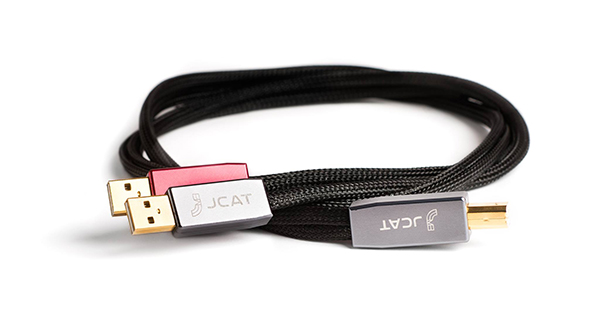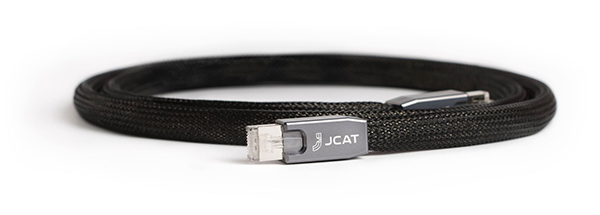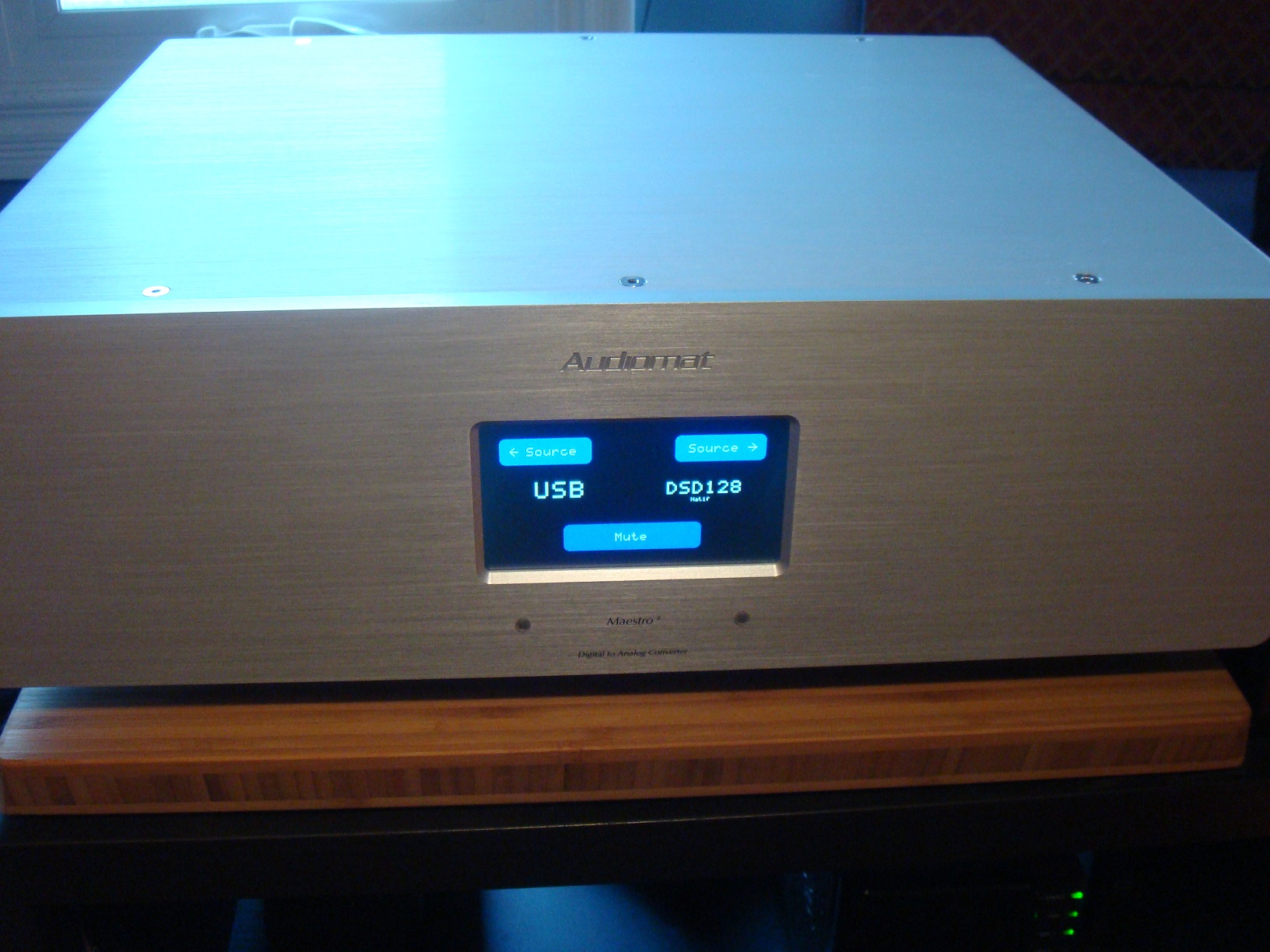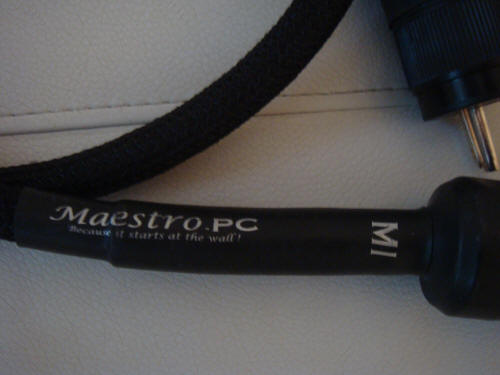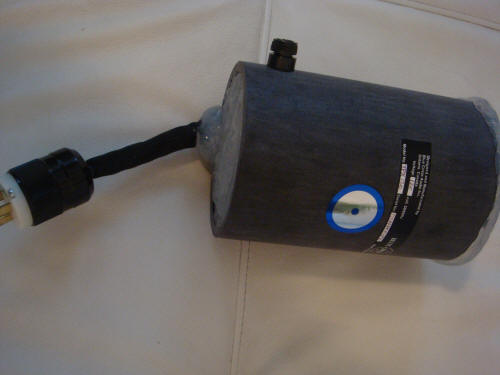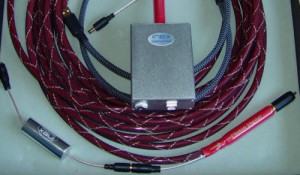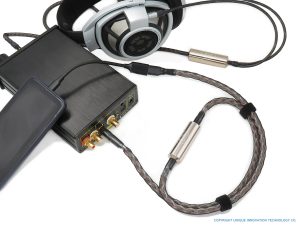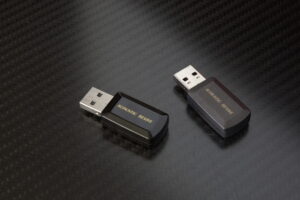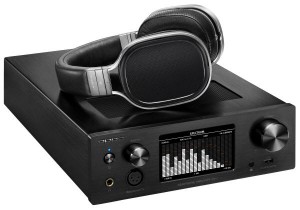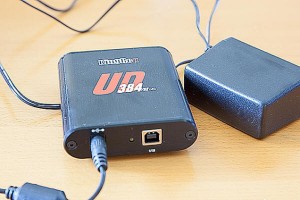The principals behind JCAT, Marcin Ostapowicz and Josef Piri are perhaps better known as the creative minds behind JPLAY, a Windows based music playback software program that I heartily recommend. JCAT is the hardware side of their venture which also includes some rather nifty computer audio components. Last year I reviewed JCAT's USB and LAN cables for 6moons and found them both to be fine cables if not quite reaching the same heights as other cables I have tried. During that review I also discovered that JCAT's LAN cable was not capable of gigabit bandwidth.
The JCAT Reference cables are aimed at offering significant performance improvements over the standard versions not to mention enhancements in construction. The Reference series cables are manufactured for JCAT by Paul Pang's Taiwan based Paul Professional Audio Studio. Pang also offers his own computer cable products such as his Separate Red USB cable, which is similar in some respects to the JCAT Reference.
The JCAT Reference USB sports a dual-lead design that separates USB data transmission from the power line. Each run has a separate USB type A connector at one end and both are terminated with a single USB type B connector at the other. The black cable carries the data while the red cable handles the 5 volt power. Therefore two free USB jacks are required on the source component although not all DACs or USB-S/PDIF convertors require USB power so the red cable can be left disconnected. However, JCAT recommends connecting both cables regardless if the DAC's USB is self-powered or not.
Both Reference LAN and Reference USB cables feature triple-shielded Teflon coated silver plated copper alloy conductors and shielded connectors to reduce susceptibility to RFI. The hefty connectors are constructed of nickel-plated copper and aluminum. The individual conductors in the Reference series are also said to contain significantly more silver than the standard series. Also noteworthy is the Reference LAN is fully Gigabit Ethernet compliant.
Incidentally during the review process Marcin emailed me a copy of their latest playback software, JPLAY 6 (for Windows). I spent hundreds of hours listening music via both JCAT Reference cables and this latest version of JPLAY and can comfortably state that V6 performs at a higher level than any previous version of this software. Furthermore V6 includes the new JPLAY Streamer application which is built upon the OpenHome Media standard and allows JPLAY to be used with OpenHome/UPnP/DLNA control points on multiple platforms. For example I was able to serve music with Minimserver and control music playback remotely via Bubble UPnP app on my Google Nexus 7 as opposed to walking over to my computer and keying selections as with JPLAY 5. Nice. There are other refinements in the software package however; the key one that I think is mostly responsible for the big uptick in sound quality is the new DAC Link feature. See www.jplay.eu for further details. Suffice it to say, earlier versions of JPLAY don't come close to the outstanding sound quality I hear with V6. Texture and transparency took a huge step forward. Music playback came across for more organic, meaty and tactile, which reminded me of what I love about good vinyl playback.
For this review I connected one JCAT Reference LAN between my Synology NAS and Ethernet switch and another between switch and my Asus laptop. The JCAT Reference USB ran from laptop to Audiomat's excellent new Maestro 3 DAC. I compared both cable models with my current references, the Light Harmonic Light Speed USB and Sablon Audio Panatela LAN which continue to impress with their obvious increase in fidelity over any generic USB or LAN cable I have tried. I thought both cables required a couple hundred hours of run-in to fully open up. Beware of quick out-of-the-box A/B comparisons.
When I initially embarked on the path of file based playback a couple of years ago I was dismayed when I observed differences between computer cabling. Believe me, I wish there wasn't or at least my wallet wishes it were so. Like most I thought bits were bits. I think that is still true in that as long as there's no disruption in the flow of data, the input will be exactly the same as the output.
Theories abound as to why computer cables can (or can't) have an audible effect on music playback but the most logical one to me, has to do with noise rejection. Computer components are notorious generators of noise and perhaps some of this low-level electronic muck rides shotgun as it were on computer cabling and somehow affects (intermodulates) the resulting audio signal. To my ears, this low-level noise usually manifests itself as a fine layer of gauze laid over the music thus masking subtle cues, ambience, and musical nuance, reducing focus and softening transients. It's so insidious that most folks don't even notice it until it is removed. I certainly notice it when I insert better cabling.
I also hear more pronounced contrast between notes and silences especially during the quieter parts of music. It's really noticeably on a solo instrumental recording; a little more contrast, a better sense of calmness and ease to playback. Again this is pretty subtle stuff but easy to hear once you know what to listen for.
Audiostream's Michael Lavorgna offers possibly the most cogent discourse yet as to how noise might affect computer cabling (HERE). He's the only reviewer I've read who's had the onions thus far to tackle this rather contentious issue—just check out the reader comments on his article. Some folks sure have a difficult time accepting that someone might hear differences between various USB and Ethernet cables. I don't have anything to add other than that my experience pretty much matches his.
Compared to the generic cabling I noted how spacious, layered and natural sounding music was with the JCAT Reference cables. The cheap stuff made music sound two-dimensional, dark and veiled. I really don't hear that much of difference with the tonal aspects of sound i.e. bass, treble with computer cabling. As I have alluded to elsewhere, the differences are primarily in in things such as clarity, definition, transient fidelity and articulation.
I have been on a Dvorak binge lately and either buying downloads or streaming via Tidal. A favorite find is a delicious DG recording; Slavonic Dances/Overtures & Symphonic Poems conducted by Rafael Kubelik, a highly under rated conductor in my view. While not an audiophile recording by any stretch of the imagination, it sounded gorgeous with the Reference USB and LAN cables. Flow, pace and inner detail were superb which made for a captivating enjoyable listening session. I find the better audio components, while more revealing of recording quality somehow also manage to reveal more musical information thus distracting me from suspect sound. I thought this was certainly true with the JCAT Reference cables.
Another favorite recordings is the 24/192 download of Michel Godard's A Trace of God. There is a level of textural complexity and spatial realness to this recording that reduces me to a quivering mess. I wouldn't have dreamed in a million years that playing music from a computer could be so intoxicating. The JCAT Reference cables easily conveyed the wondrous texture and inner detail and nuance of this recording in a direct, transparent manner that was far superior to lesser cables.
After a good deal of swapping from the JCAT Reference and the previous JCAT cables it was easy to spot the differences. While I enjoyed the earlier JCAT USB and Ethernet, I thought them a little veiled, slightly lacking in focus and didn't captivate me to the same degree as my current references, Light Harmonic's LightSpeed USB and Sablon Audio's Panatela LAN. The JCAT Reference series narrowed the gap considerably to the Panatela and LightSpeed so much so I'd say they are pretty much equal and the only differences were more of a matter of flavor. The JCAT Reference cables offered a slightly warmer more forgiving balance whereas the LightSpeed and Sablon Audio Panatela LAN came across a tad leaner, faster with a more open and extended top end. I am pretty much splitting hairs here—they all better communicate the humanness and meaning of music to a far greater degree than the generic stuff.
The LightSpeed USB and Sablon Panatela LAN both resolved a bit more low-level information while the JCATs had a slightly warmer more relaxed quality. With the killer LightSpeed I heard a slightly larger more layered presentation with more explicit transients. However, I'm really stretching the differences here as I could live with any of these cables.
I generally find comparing computer cables be they generic or audiophile, a little trickier than comparing audio interconnects and speaker cables. Or at least in my system they are. I know some audiophiles who don't hear any difference between generic unshielded CAT5 and audiophile grade shielded CAT7 cables. It's been my experience that mixing in computers, NAS, network switches and cabling to an audio system, the number and degree of variables seem to skyrocket. I am finding as I try various DACs and other computer components that occasionally the cables I use don't seem to make as much of a difference as I had noted previously. Again, I think noise and therefore jitter is the key in file based music playback.
In conclusion I found the JCAT Reference USB and LAN cables to be an easy recommendation especially at their price point. While I still think Light Harmonic's LightSpeed is the cat's pajamas of USB cables currently, the JCAT Reference comes awfully close at a considerably lower price point and might be a better match for some folks who might find the LightSpeed a little too revealing up top. The Reference LAN and Sablon Audio Panatela LAN were almost too close to pick a winner but if forced to choose I'd pick the Panatela as it could shake out a little more inner detail. Heck, I think anyone would be happy with any of these cables. Choose whatever you can afford. Paul Candy
Reference USB: 499€ /1m (449€ for JPLAY customers)
Reference LAN: 499€ /1m (449€ for JPLAY customers)
JPLAY
www.jplay.eu/jcat




